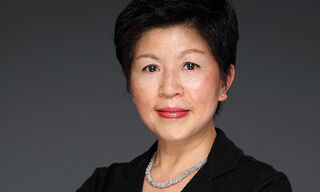Analysts: Singapore Bank Shares Offer Value
Shares of Singapore banks offer good value now that they have fallen by 26 percent year-to-date. With better capital positions as compared to during the global financial crisis, they have the capacity to retain dividend payout.
Even as the coronavirus outbreak drags Singapore into negative growth territories, Singapore banks are in better shape today as compared to the period during the global financial crisis (GFC). The higher capital ratios, high provisioning levels, and geographic diversity should serve to limit further falls in the share prices of the three local banks, said analysts.
«We expect a rapid rise in non-performing loans (NPLs) and credit charges may surpass levels seen during the 2017 O&M crisis. However, unlike past crises, these banks are starting with strong capital ratios, high provisioning levels, and wider geographic diversity. Unprecedented, coordinated fiscal and monetary stimulus efforts by governments focused on liquidity support should also provide downside support, in our view,» wrote Thilan Wickramasinghe, an analyst with Maybank Kim-Eng on Wednesday.
Triple Threat To Bank Earnings
The three pressures on banks' earnings include the COVID-19 pandemic, interest rate cuts, as well as the oil price war that continues. The coronavirus pandemic would affect small-medium enterprises most, followed by housing loans if employment levels fall. However, there are no indications of a rapid fall in asset qualities yet, wrote Tay Wee Kuang, an analyst with Philip Securities in a research note on Thursday.
The oil price war reminiscent of the 2016 oil price meltdown will have a limited impact on asset quality because all three banks have taken steps to clean up their oil and gas loan books in prior periods by reducing exposures in the industry and accounting for necessary provisions. «Banks' exposure to the oil and gas sector has dwindled to below 2 percent of their loan books.»
Cushions To Downside
Moreover, various fiscal and monetary stimulus rolled out by governments worldwide should provide cushions to the downside. For instance, Singapore has unveiled a fiscal boost to tackle the Covid-19 virus outbreak with an S$6.4 billion package targeted at epidemic containment, as well as support for industries that are directly impacted. Initiatives include Co-Funding schemes for affected sector SMEs, rebates on corporate and property tax, cash grants for retaining local employees and targeted assistance to defray business costs and other concessions for the aviation and maritime sector.
The Malaysian government also unveiled its Covid-19 impact-targeting 20 billion ringgit «Economic Stimulus Package» late February, modeled after responses during the SARS crisis. «These programs are primarily focused on ensuring liquidity flow to impacted SMEs and individuals, aimed at helping them weather uncertainty and keep their debt obligations current and staff employed. These should provide significant downside support in mitigating defaults and credit risks, in our view,» wrote Wickramasinghe.
Attractive Valuations
The sector is now trading at 0.8 times forward price-to-book, or two standard deviations below mean. «Despite aggressive cuts to earnings per share and target prices, the banks offer significant value, in our view. While valuations are about 30 percent above GFC troughs, we believe the sector is significantly different from then and so is its risk profile,» wrote Wickramasinghe, who has upgraded OCBC on potential market share gains in the region.
Meanwhile, the sector provides a highly visible dividend yield of 6.4 percent, 136 basis points higher than peers in Southeast Asia. The fact that the three banks' Common equity tier 1 ratios are above 14 percent- comfortably above the regulated 10.5 percent set out in the Basel III accord - means that banks are unlikely to trim dividends, notes Tay.
«The last dividend cut undertaken by banks was during the GFC. However, the current situation is not comparable to the GFC, where the global financial system collapsed when the credit quality of the banks came under pressure,» wrote Tay.


























